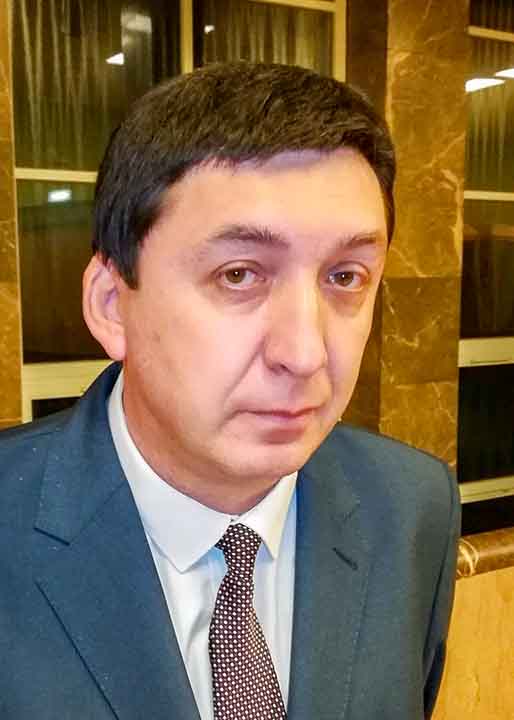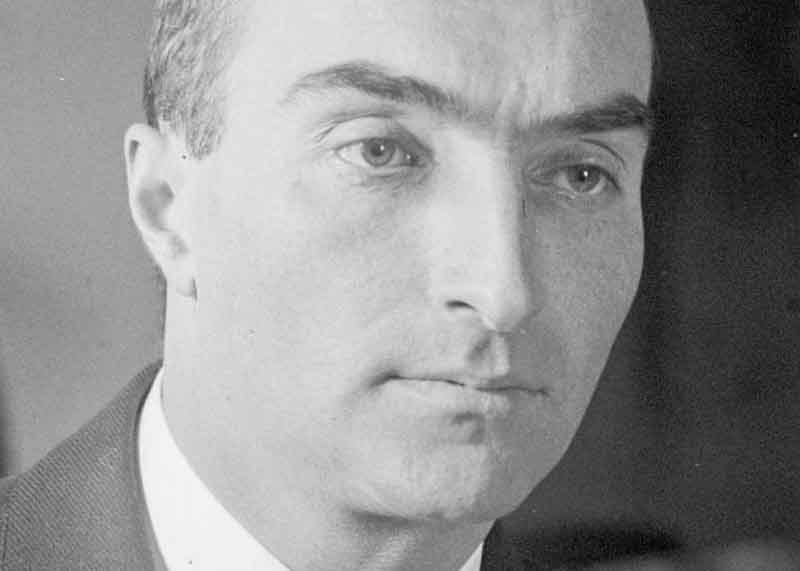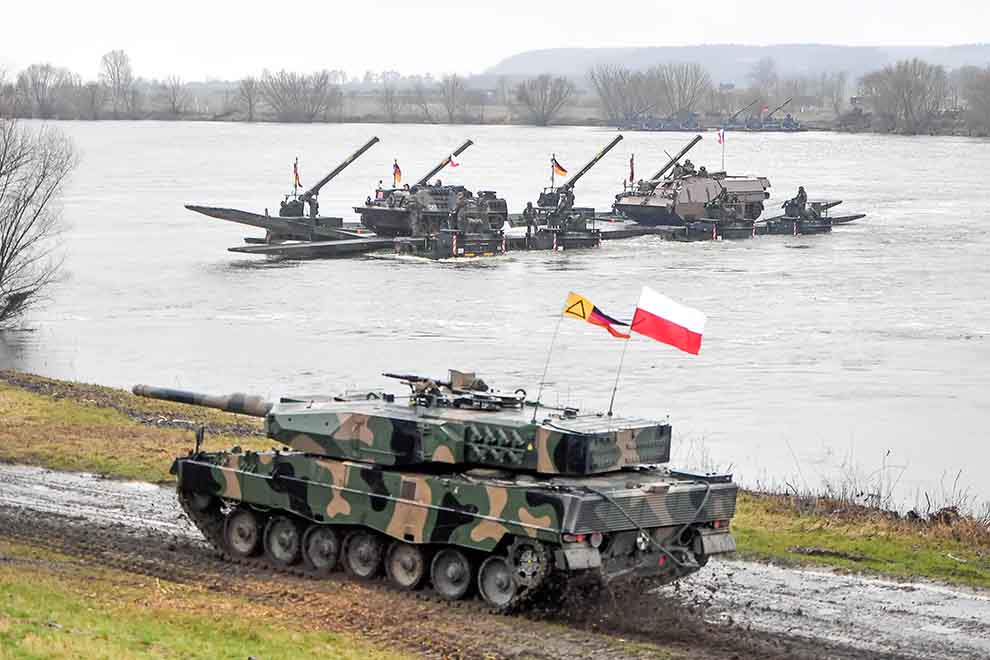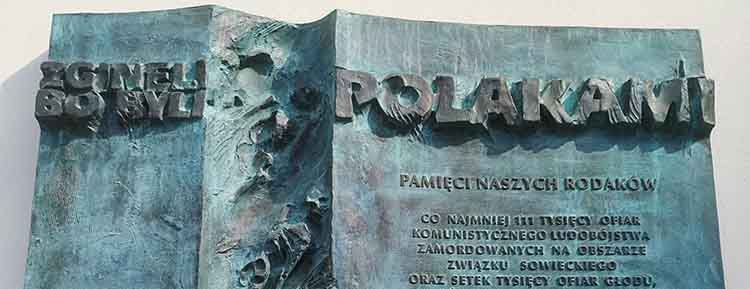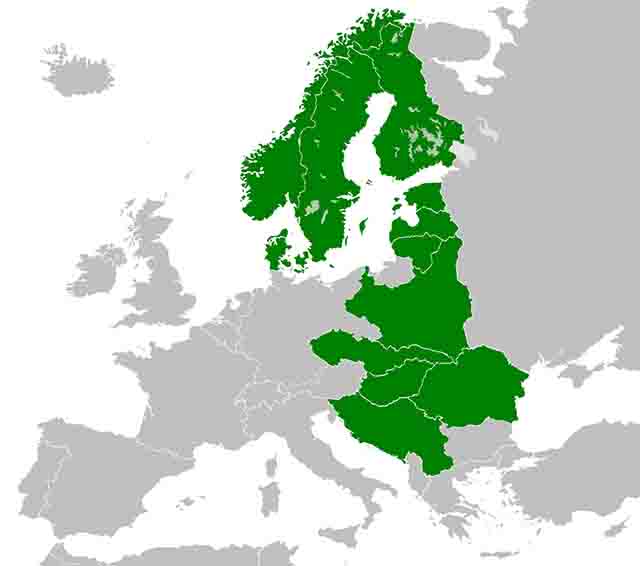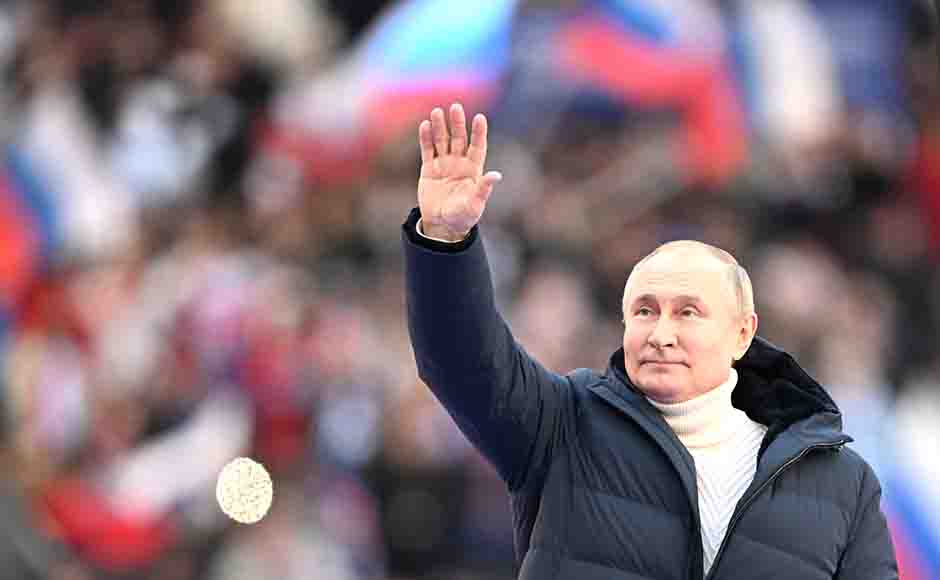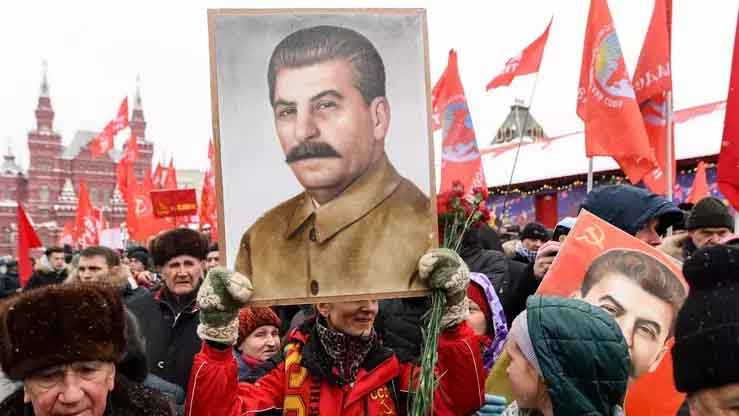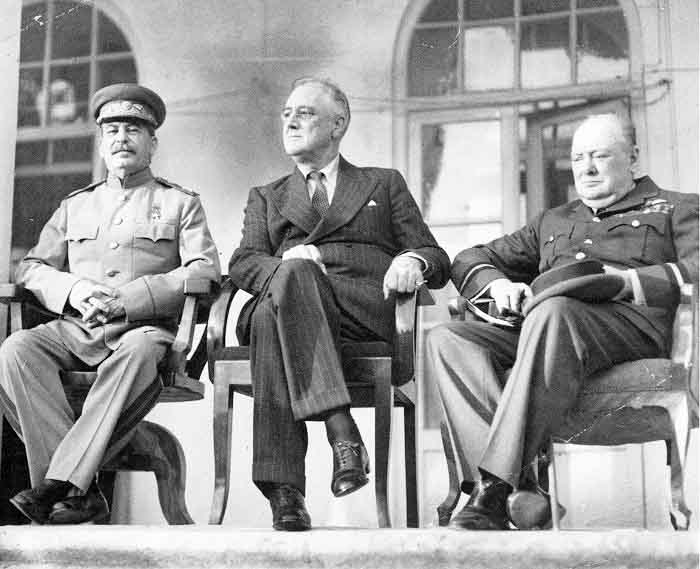Stalinism is a system of state rule. It was created by a dictator who died seventy years ago. What was this system — from a historical perspective?
There is no doubt among historians that Stalin's state was a totalitarian state and it was the most developed totalitarianism, and the most repressive towards the population, of the three varieties of this form of government known to Europe. There is, of course, a dispute between historians about the chronological extents of Stalin's dictatorship, because it is known that from Lenin's death (January 1924) to 1929 there was a peculiar transitional period. The decreeing of universal forced collectivization was a turning point. It established a new phase of dictatorship. That's true. It should be emphasized, however, that the Soviet state under Lenin already fulfilled all the characteristics of a totalitarian state: mass terror, the system of concentration camps, the state monopoly of propaganda. The state had no limits to its power.

Stalin on a World War II propaganda poster - one of the manifestations of the cult of personality. Caption under the poster: "It is our luck that in the difficult years of the war the Red Army and the Soviet people were led forward by the wise and experienced leader of the Soviet Union - the great Stalin" (Source: Wikipedia, translated by A. Woźniewicz)
Collectivization was the real complement to the Bolshevik revolution. It liquidated by force the largest social class - the Russian peasants. In Stalin's opinion, this was a necessary step to bringing the countryside under state control, to building the heavy industry to produce heavy weapons. Peasants in the USSR were treated extremely harshly. Their position showed the fiasco of Bolshevik promises. The ruthless exploitation of the countryside was the basis of the industrialization experiment. This social class, which was instrumental in the victory of the Bolsheviks in the civil war and tipped the scales of this victory in their favor, paid the ultimate price for it. It was the price of mass dispossession, starvation, deportation to concentration camps.
The mysterious murder of Sergei Kirov, the head of the party organization in Leningrad, on December 1, 1934, unleashed an avalanche of Stalin's moves, the consequences of which no one could even imagine. This event gave rise to the Great Terror, which established Stalin's autocracy. Three great show trials resulted in executions of functionaries of the Bolshevik elite in 1936–1938. Contrary to appearances, the Great Terror was not only an eruption of barbarism, but also the application of the most effective method of government in Stalin's understanding. In this sense, the terror was rational — it served a great exchange of cadres to remove the old Bolshevik communist elite.
It can be said that the Great Terror, which ravaged the party and the army, was an extremely important double transition: from Stalin's relatively "moderate" autocracy to his supremacy as a truly "earthly god" and the Great Terror; and from the policy of rapprochement with Poland, to the "cold war" with it. "The history of our planet knows no other example of such total power" - these are the words of Aleksander Weissberg-Cybulski about Stalin's rule. This most repressive totalitarian system known to history was created by Stalin at the price of extremely large human sacrifices. For the creator of the Soviet superpower, human life was incredibly cheap. Here, of course, the barbaric face of the East, of which he was the exponent, had its influence.
Under Stalin, it should be noted, there was a return to the idea of Great Russian nationalism, which was not appreciated by Lenin. One of Stalin's significant adjustments to Lenin's course was to prioritize "the state over ideology." A strong state counts above all else. Ideology is supposed to legitimize a strong power — a power that has no boundaries.

Poster from the Stalin era with the inscription "The whole world will be ours!" (Source: Wikipedia)
Lenin's experiments with the communist utopia were followed by a return to some realistic principles of collective life. First of all, the family was rehabilitated, abandoning the slogans of free love.
The mass mobilization of society around "socialist construction" in the era of the first two "five-year plans" required the development of propaganda to the limit. The slogan "labour competition" and the Stakhanov movement remain eloquent examples in this regard.
The Soviet worker by no means became a representative of the "ruling class." The ruling class in the USSR was the bureaucracy. Soviet society was not classless at all - it had two classes, a bureaucracy (a new class) and the rest of the country's population deprived of all rights, despite the provisions of the 1936 constitution, which granted a Soviet citizen even the right to complain against the authorities (sic!).
In foreign affairs, Stalin bet on Germany, but he was caught by surprise, i.e. the victory of Hitler and the National Socialists in the struggle for power in Germany in 1933. The Rapallo system was in ruins, although not all forms of trade exchange, for example, were exhausted, even though Bolshevik and National Socialist propaganda fought each other in an extremely persistent manner.
Tactically, Stalin had to retreat from his orientation towards Germany, but his dream of an agreement with Germany to divide Europe remained. This required only one thing - Germany's readiness. In the summer of 1939, the Soviet state achieved considerable success. It was the well-known agreement with the Third Reich of August 23 this year. It made it possible to occupy territories to which the Soviet empire had ongoing aspirations — eastern Poland and the Baltic states. It was a great attack on the Europe of nations, aiming to reverse the course of history. All the stories of Western historians, that Stalin wanted an alliance with Great Britain and France against Germany, but failed to take advantage of the situation, are false. The sources say something completely different.
The war that Hitler started by invading Poland on September 1, 1939, was a dream scenario for Stalin in international relations. Especially the removal of Poland from the map of Europe suited him very well. He made this clear to Georgy Dimitrov, the chairman of the Communist International, on September 7: “The annihilation of this state under favorable circumstances would mean one less bourgeois-fascist country. What would be wrong if, as a result of the defeat of Poland, we spread the socialist system to a new territory and population?
The Great Patriotic War with Germany was certainly Stalin's greatest leadership experience. The victory brought by the Soviets in 1945 allowed them to control the Europe of the Intermarium - with the exception of Yugoslavia, which slipped outside his control, and Greece, which the Communists could not control through a bloody civil war. This control over the Intermarium part of Europe took place with the consent of the West and was a recompense for the fact that the Soviet state bore the main burden of the war on the eastern front, fought, of course, in its own interest, but also in the interest of the Anglo-Saxon powers. The Sovietization of the Intermarium Europe was Stalin's obvious goal, not the result of the outbreak of the Cold War in 1947. In a statement addressed to Milovan Dilas, Stalin presented his simple motto: whoever occupies a given territory establishes his system there.
The Soviet dictator was undoubtedly cautious in his foreign policy. The Polish-American sovietologist Adam Ulam wrote that in Soviet politics expansion and coexistence are not opposites, but "dialectically" complement each other. Indeed it was the case. Stalin used the method of expansion and the method of coexistence. Alternately. He avoided a situation that would put his country in a confrontation with the West. He pursued a policy of pitting foreign powers against one another, which he had been talking about since 1925.
Anti-fascism as an ideology was one of Stalin's main concepts. World War II provided justification for this propaganda, because the Soviet Union fought against the Third Reich and dealt it a decisive blow. Anti-fascism, as the French historian François Furet has convincingly argued, gave the Soviet version of communism a new attractiveness. Anti-fascism made it possible to justify Stalin's crimes against his own society. This was explained quite simply in the West by repeating that, despite all its shortcomings, the Soviet Union was the main force in the face of fascism.
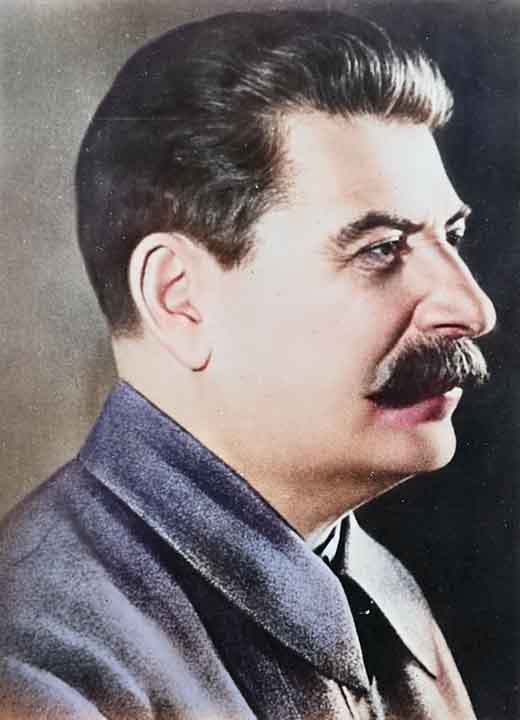
Iosif Vissarionovich Dzhugashvili, known as Joseph Stalin (colorization: A. Woźniewicz, source: Wikipedia)
It seems that the last phase of the dictator's life in Moscow was marked by his great fears lest the Soviet state suffer some kind of internal crisis that would threaten Stalin's autocracy. Stalin, by all indications, wanted to resume terror on a large scale. The case of the Kremlin doctors was conceived as a prelude.
What legacy did Stalin leave?
When the dictator died seventy years ago, the former Polish ambassador to Moscow, Wacław Grzybowski, asked for a comment by the Polish Section of Radio Free Europe, said that Stalin left the state as a huge concentration camp and piles of human corpses. Without denying this fundamental truth, it should be added that the Soviet dictator left behind a sick dream that the state he ruled be great. It was a sick dream, because it was based only on the conviction that foreign nations should just be enslaved, without giving them any civilizational values.
The Soviet superpower, founded on the victory in World War II, was one-dimensional — it boiled down to the discharge of military power. In 1945, Stalin really achieved the position of the main architect of the post-war order. In fact, it was in Yalta and Potsdam that he achieved everything he wanted, and the decisions supported there — especially the territorial ones — were his concepts (this applies in particular to Poland). Stalin's state was a gigantic prison — let us repeat in conclusion — but this sick dream of greatness still affects the imagination of Russians today.
Translation from Polish by Andrew Woźniewicz.



